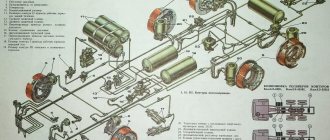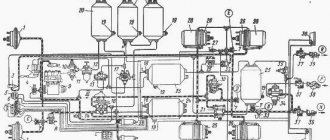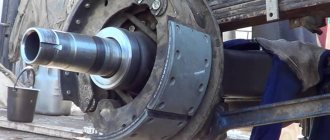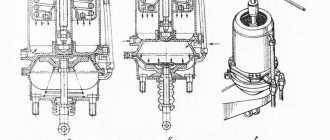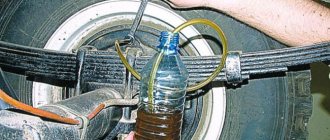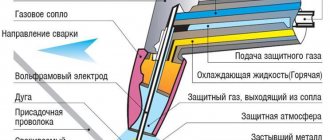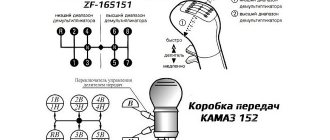Reasons for lack of pressure in the compressor:
- leaks, clogged pipelines and hoses;;
- compressed air leak;
- wear of protective valves;
- wear of piston rings;
- incorrect operation of the sensors.
We also recommend paying attention to the pneumatic valve, solenoid valve and damper mechanism.
If a malfunction is detected, we recommend contacting a service center to diagnose and understand the problem. An independent solution can lead to more serious damage.
Where can repairs be made?
- 1) On site (on-site visit of a specialist within Moscow and Moscow Region)
- 2) Service center in Podolsk (Pleshcheevskaya street, 30B)
- 3) Service center in Moscow (Skotoprogonnaya st., 33A, building 1)
Timely troubleshooting will save you from additional waste and major repairs.
There are four main malfunctions that lead to malfunction of brake systems:
– malfunction of the protective valves, – clogging or looseness of receivers, pipelines and hoses, – improper operation of piston rings and sensors, – compressed air leakage.
In order to prevent possible malfunctions in the KAMAZ brake system, it is necessary to check the operation of its systems in a timely manner. This can be done once every two years. So, below is a list of possible defects in the KAMAZ brake system and methods for eliminating it.
There is a lot of oil in the pneumatic system.
Wear of piston rings. Remedy: replace the compressor.
Receivers of circuit 1, 2 and 3 are not filled with air.
Cause: The supply tubes are clogged. Elimination method: simply blow out the tubes, and if foreign objects are found there, remove them. Cause: The safety valve is broken. Remedy: change the valve.
Pneumatic system receivers fill very slowly or do not fill at all.
Cause: Tubes, hoses or adapter and connecting equipment are not tightened sufficiently. Remedy: Tighten the places where the parts are connected; if necessary, replace the uncorrected parts. Reason: the receiver or device is not hermetically sealed. Remedy: change the receiver or device. Cause: The air supply hoses and tubes are damaged. Remedy: change hose and tube assemblies. Cause: Compressor performance is low Remedy: Check the compressor if it needs to be replaced. Reason: presence of dents on the surface of the outlet or air supply bosses. It is noticeable to a significant extent that the surfaces are not perpendicular to the axes of the holes in the threads. Remedy: Sand out small nicks and dents. Remove the problem of non-perpendicularity.
In the receivers of circuits 1 and 2, over or underpressure is observed when the pressure regulator is operating.
Cause: The pressure regulator is not adjusted correctly. Remedy: make adjustments using the adjusting screw, change the regulator as necessary. Cause: broken 2-pointer pressure gauge. Remedy: change the pressure gauge.
The car brakes poorly or there is no braking when the brake pedal is pressed.
Cause: Compressed air leak. Remove air leak.
Poor braking of the vehicle or lack of braking.
The prerequisite is that the circuit 3 hoses or tubes are clogged. Remedy: clean the tubes and then blow them with compressed air. If necessary, change it. Reason: spring energy batteries do not work. Remedy: change the spring energy accumulator and brake chamber. Cause: The relay valve is faulty. Remedy: replace faulty parts. Reason: increase in the stroke rate of the brake chamber rods. Remedy: adjust the stroke of the rods
Pull towards the vehicle when braking.
Cause: The brake pad linings of the brakes are oily. Remedy: change or wash the brake pad linings. Cause: The brake mechanism is poorly adjusted. Remedy: Adjust the rod output.
Source: www.tankdiv.ru
How to choose and replace the safety valve correctly
During vehicle operation, the safety valve is subjected to various loads and negative influences, which can result in malfunctions. Most often, valves stop working as a result of condensate freezing in the cold season; loss of tightness of seals, wear, deformation and breakage of parts are also often observed. If a malfunction is detected, the valves are dismantled and, if possible, repaired. If the malfunction cannot be eliminated, the assembly should be replaced as an assembly.
To replace, you should choose a safety valve of the same type that was installed previously - this guarantees normal operation of the unit within the established pressure range. You can also use valve analogues, but they must be suitable not only in terms of characteristics, but also in terms of installation dimensions. When installing the valve, ensure that its terminals are connected correctly to the air lines. Then, if necessary, the bypass valves are adjusted to ensure the desired filling order of the circuits.
With proper selection and installation, the safety valve will correctly perform its functions, ensuring reliable operation of all circuits of the pneumatic system and vehicle safety.
Source
To watch online, click on the video ⤵
The KAMAZ does not pump air. Reason. More details
KamAZ 53504 does not pump air, and little about the air system Read more
Kamaz Euro 4 does not pump the compressor. More details
KamAZ EURO pumps the air compressor very poorly Read more
Secrets of an old KAMAZ driver. Quiz. Question 3. Read more
KamAZ 65117 did not pump air or connect the cab part 2 Read more
AIR LEAVES THROUGH THE KAMAZ ACCELERATING VALVE. HIT WHEN REMOVED FROM THE HANDBRAKE. More details
Does not pump air into the circuit zil 5301 bull Read more
Why does the pressure gauge indicate different pressures Read more
Triple and double protection, how it works and how it can be simplified Read more
Two-cylinder compressor, head repair and ring replacement Read more
Brake system KAMAZ More details
How to simply pump oil on a KAMAZ) Read more
Air leak from the brake valve KAMAZ ZIL PAZ MAZ KRAZ GAZ Read more
Everyday life of a Kamaz driver: we start the car in the winter at – 3, after a week of parking Read more
Vlog without editing. How to properly pump air into the pneumatic system of KAMAZ 5511. 5 Read more
Pneumatic braking system Read more
Air dryer for MAZ, KAMAZ 1 part. More details
Why does a trailer take a long time to release the handbrake More details
Source: putinizm.ru
What malfunctions occur most often and why do they appear?
- pneumatic valve is broken
- The damper mechanism or solenoid valve is broken
You press the brakes, but only the front brakes. The handbrake is working. Tell me what could be.
What could be the reason for the fact that air does not pump to the upper needle of the pressure gauge, but to the lower one only by 5 atmospheres?
I changed all the membranes on the energy accumulator, changed the main brake distributor, also new, but the handbrake does not work
Check whether the handbrake blocks the air at the outlet of the handbrake. Or the accelerator valve is faulty. There may also be an emergency release button.
What could be the reason for the fact that air does not pump to the upper needle of the pressure gauge, but to the lower one only by five atmospheres?
When you press the brake pedal hard, the rear axles jam and then do not release for a long time.
What benefits will you get if you use an on-board computer. We will also tell you which BK is preferred by many owners of the BAZ 2112. You will read detailed instructions for its installation.
If your VAZ 2109 carburetor settings are out of whack, and you don’t have extra money to go to a car service center, but you don’t know how to set it up yourself, then read this article. Then you will know how to set up the carburetor correctly yourself.
The key does not reach the factory position? Or does it not automatically return back when the engine starts? This means there are problems with the ignition switch of the VAZ 2110. If you don’t know how to solve them, this article will tell you. You will also learn how to change the lock.
Malfunctions of pneumatic drive power supplies
When servicing the pneumatic drive of the car brakes, you must first make sure that the system is tight.
Particular attention should be paid to the tightness of connections of pipelines and flexible hoses, since this is where air leaks most often occur.
Places of strong air leakage are determined by ear, and weak ones - using a soap emulsion.
Air leaks from connections of pipelines and brake system devices are eliminated by tightening them, and leaking pipelines and flexible hoses are replaced.
It must be remembered that on cars manufactured since March 1986, pipeline connections are sealed using rubber rings, so the tightening torques of the fittings should be less (Table 1).
Design and mechanism of operation
The design of this mechanism contains such parts as:
- unloading piston and valve;
- air flow sampling plug;
- release type valve;
- spring mechanism;
- balancing device;
- adjusting screw;
- case;
- follower type piston;
- check valve;
- unloading mechanism saddle;
- cap;
- atmospheric findings;
- filter and pusher.
The flow of compressed air from the compressor system through the output of the control mechanism, filter elements and valves enters the receivers of the car's pneumatic system.
How to adjust air pressure
In order to adjust the air pressure, you need to install the vehicle on an inspection hole or a special platform for repair work.
Adjustment of the mechanism is carried out only when the power unit is turned off.
The whole process takes place in 3 steps: disassembly, adjustment and installation.
In order to dismantle the regulator, it is necessary to unscrew the lock nut and unscrew the adjusting screw. This will help loosen the counterbalance type piston springs. After this, use a special socket wrench to remove the spring device, unscrew the protective cover and remove the sealing collar.
In order to remove the muffler, you need to unscrew the fasteners from the bottom of the cover and remove the filter element. Then you should remove 2 o-rings and the unloading piston. After dismantling, it is recommended to wash all parts with clean gasoline.
After the above steps, you should install the regulator on a special test panel and connect the device according to the diagram given in the user manual.
After connecting, you need to apply compressed air at a pressure of at least 1.4 MPa to the terminals 3 times.
In this case, if the limits of the regulated pressure exceed 0.8 MPa, it is necessary to adjust the pressure level to the required limits using a bolt.
Upon completion of the adjustment, you should check the level of pressure on and off the regulator 3 times, after which you can lock the bolt.
How to improve your brakes
Repairing the KamAZ brake system and tuning will help improve the performance of this mechanism:
- Replacing standard discs with larger diameter ones. To install them, you need to drill special holes that must coincide with the mounting bolts of the tuning part. In some cases, plates may be required to support calipers over larger disc mechanisms. You should also purchase wheels that are larger in size and width.
- Replacing the standard mechanism with a ventilated disc or device with notches of the same size. Calipers must be installed on each disc using reliable fasteners. This method will help increase the efficiency of the brake chamber by 2 times.
When carrying out work to improve brake performance, the following recommendations must be observed:
- The brake design itself is prohibited from changing at the legislative level. Any changes will be detected during regular technical inspection.
- All parts should be selected only from reliable manufacturers who have passed the certification procedure.
- Tuning can only be done if all elements of the system are in good condition.
There are many videos on the Internet on how to improve the brakes on KamAZ. Typically, model 5511 is used as an example. Improving the brakes is best left to professionals, since if you adjust it yourself, there is a chance of completely ruining the system.
If the brake in a car does not work well, then you should first check whether all the auxiliary systems are working properly, and only then understand the brake mechanism.
How to remove a brake drum
Before performing this procedure, you should wear protection, such as a mask or goggles.
To remove the brake drum, do the following:
- Place the vehicle on a special platform.
- Stop the engine and raise the handbrake.
- Loosen the bolt tension.
- Using a wheel wrench, turn each nut 1 turn counterclockwise.
- Raise KamAZ using a special device.
- Unscrew the bolts and remove the wheel.
- Using a wheel wrench, remove any loose wheel nuts.
- Remove the cap and put all unscrewed fasteners into it.
- Remove the wheel from the guides.
- Loosen the pads by unscrewing the adjuster screw, which is located on the outside of the drum part.
- Turn the drum so that the hole aligns with the adjuster screw.
- Turn the regulator screw clockwise until it stops.
- Remove the drum.
- Using a screwdriver, remove the screws that hold this mechanism to the wheel.
- Pull the drum towards you using a special puller.
- Insert a screwdriver under the flange of the drum mechanism.
- Lightly tap the lever, screwdriver, or the drum itself.
How to adjust
To adjust the brakes on KamAZ you need:
- Check the movement of the brake lever. It should move freely and return to its original position.
- Align the holes in the handle body and the mechanism rod fork by rotating the worm.
- Press the control unit all the way in the direction of its rotation.
- Using bolts and nuts, connect the fixing type bracket to the control unit of the handle. The position of the block should remain the same.
- Rotating the worm, open the brakes until the pads touch the drum mechanism.
- Turn the worm in the opposite direction ¾ of a turn. The gear coupling must work, and the turning torque of the worm must be at least 42 Nm.
- Check the functionality of the handle. To do this, you need to release the brakes of the vehicle in place by pressing the pedal all the way.
- Check the serviceability of the rod. It should move without binding.
- Adjust the stroke of the rod according to the required clearance by rotating the worm.
- Check the uniform rotation of the drum mechanism.
After 2-6 km, inspect the mechanism for heating of the drum device. The temperature should not exceed +60…+80°C.
The diagram and design of the brake system of a KamAZ vehicle includes such elements as:
- rear drum brake pad;
- cylindrical brake mechanism of the rear wheels;
- pedal;
- rod with piston part;
- tank for working fluid;
- main cylindrical mechanism and energy accumulators;
- front drum brake pad;
- wheel type cylinder;
- control lamp and pneumatic drive;
- forward pipeline;
- reverse pipeline.
The principle of operation of the brake system of a trailer, semi-trailer:
- When the user presses the brake pedal, an impulse is generated that is transmitted towards the vacuum booster mechanism.
- Through the amplifying element, the impulse is transmitted to the main cylindrical mechanism.
- The piston part of the system moves fuel to the wheel cylindrical parts, which increases the pressure in the brake type drive.
- The piston mechanism begins to move the pads to the disc clutch.
- Movement slows down. Fuel pressure can reach 11-16 MPa. The higher this indicator, the better the braking device works.
- When the user lowers the pedal, it returns to its initial position under the influence of spring parts.
Malfunctions and repairs
Main malfunctions and repairs of the regulator:
- If air leaks through the atmospheric outlet, you need to clean the valve body or replace the faulty valve and O-ring.
- The device has finished switching the compressor to idle mode. This problem can be caused by clogging of the channel, jamming of the piston, or damage to the cuff. It is recommended to clean the valve, conduct an external inspection of the cuff and, if necessary, change it to a new one, and also update the piston.
- The regulator has finished switching the compressor to the mode of filling the system with air. This malfunction is associated with clogging of the atmospheric orifice and intake valve, a warped spring, a worn O-ring, tightness of the piston part and wear of the valves. It is necessary to carry out an external inspection of the entire system for damage and defects, and replace failed spare parts as necessary.
- Air leakage through the outlet into the atmosphere can be eliminated by replacing the filter element.
- When there is no supply of compressed air flow to the brake system of a vehicle, it is necessary to clean the return valve from accumulated contaminants or replace it if worn.
- If there is a small shaft between the on and off pressure levels of the control device, you should change the warped cuffs and rings, inspect and clean the valves and seats.
All repair work is carried out only with the engine turned off.
Engine system diagnostics
Computer diagnostics Kamaz
Our company’s specialists have significant experience in diagnosing KamAZ engine control systems when the gas pedal stops responding. The diagnostician will adequately identify the resulting breakdown. Next, the engine system will be repaired, with the replacement of spare parts, programming, if necessary.
Stories from our practice
Reviews and prices
The average cost of the Russian Far East is 4,500 rubles.
Misha, 36 years old, Izhevsk: “I have been working as a KamAZ driver for 6 years. Over the course of its operation, the air pressure regulator in the pneumatic system failed a couple of times. On average, repairs take about one to two days. In order for the mechanism to break down less often, I recommend using high-quality fuel.”
Alexander, 49 years old, Lipetsk: “I work in a service center. Cars are often brought in for repairs with a non-functioning air pressure regulator. This mechanism fails if maintenance is not carried out on time and the oil in the system is not frequently changed. I also recommend cleaning the filters at least once a month.”
Evgeniy, 53 years old, Voronezh: “I work at KamAZ 45143. The regulator failed only 2 years after the start of operation of the vehicle. At first, an air leak began, and later the device finished switching the compressor to a suitable operating mode. I did the repairs without the help of others according to the instructions, no difficulties arose.”
Konstantin, 46 years old, Leninsk: “In order to repair the regulator, I recommend using a special device that helps adjust the pressure level. Before connecting equipment to this device, it is necessary to perform an external inspection of the regulator for the presence of any damage or defects.”
Peter, 50 years old, Krasnodar: “I have repaired the regulator at KamAZ 3 times already. The cause of failure is always clogged filter parts and warped cuffs. In order to avoid defects, I recommend changing the O-rings once every 3 months and frequently carrying out technical maintenance of the vehicle.”
Why is the brake pedal higher than the gas pedal?
Drivers often wonder why on many models all the pedals in the car are not on the same plane. As a rule, on a car with an automatic transmission, the brake pedal is noticeably higher than the gas pedal. On cars with manual transmission, the clutch and gas are also often lower than the brake.
Let us note that there is a lot of debate on this matter and there are a number of conjectures and assumptions. Some car enthusiasts claim that this is inconvenient, others complain that if the pedals were in the same plane, it would be easier to control the car, etc.
One way or another, in fact, this arrangement of the brake pedal is made for maximum safety. The simplest explanation is that if the driver accidentally or due to inexperience mixes up the pedals, he will first press the brake and not the gas. In an emergency situation, it is also easier to “grope” the brake pedal located above or simply “hit” the entire pedal assembly, hitting the brake pedal with your foot first, and not the accelerator pedal located below.
Let’s also add that some owners believe that the brake pedal is placed higher in order to increase its travel, and also taking into account the need for more force (lever).
Possible malfunctions of the brake systems of KamAZ vehicles are given in Table 12.2
Table 12.2 – Possible malfunctions of brake systems
| Cause of malfunction | Elimination method |
| 1. The pneumatic system receivers are not filled or are filled slowly. The pressure regulator does not work | |
| Damage to air supply hoses and tubes | Change hoses and tubes |
| Insufficient tightening at the joints of tubes, hoses, connecting and transition fittings | Tighten connections Replace faulty connection parts and seals |
| The presence of nicks and dents on the end surfaces of the compressed air supply (discharge) bosses. Significant non-perpendicularity of the end surfaces relative to the axes of the threaded holes | Sand small nicks, dents, remove non-perpendicularity |
| Leakage of the receiver, device | Change receiver, device |
| Reduced compressor performance | Check the compressor, replace if necessary |
| 2. The pressure regulator often operates when the pneumatic system is filled with air. | |
| Leakage of compressed air in the line from the pressure regulator to the safety valve | Remove the leak using the methods indicated in paragraph 1 |
| 3. The pneumatic system receivers are not filled with air. The pressure regulator is activated | |
| Incorrect pressure regulator adjustment | Adjust the pressure regulator using the adjusting screw. Change the regulator as necessary |
| Clogged tubes in the area from the pressure regulator to the safety valve | Inspect the tubes, if necessary, remove and blow out. If the tube is incorrectly bent (there is a kink), change it |
| 4. Receivers of circuits I, II or III are not filled with air | |
| Safety valve malfunction | Replace a faulty device |
| Clogged supply tubes | Blow out the tubes. If there are foreign objects in the tubes, remove them |
| 5. Trailer receivers are not filled with air | |
| Malfunction of trailer brake system control devices located on the tractor; trailer brakes | Replace a faulty device |
| Clogged supply tubes | Blow out the tubes If there are foreign objects in the tubes, remove them |
| 6. The pressure in the receivers of circuits I and II is higher or lower than normal when the pressure regulator is working | |
| Malfunction of two-pointer pressure gauge | Change the pressure gauge |
| Incorrect pressure regulator adjustment | Adjust the regulator using the adjusting screw. If necessary, change the regulator |
| 7. Ineffective braking or lack of braking of the vehicle by the working brake system when the pedal is fully depressed | |
| Brake valve malfunction | Change the brake valve |
| Contamination of the cavity under the lever covers of the two-section brake valve. Rupture or removal of covers from the seat | Clean the cavities from dirt. Change covers if they are unsuitable |
| Relay valve malfunction | Change the accelerator valve |
| Significant leakage of compressed air in the lines of circuits I and II in the area after the brake valve | Remove the leak using the methods indicated in paragraph 1 |
| Improper adjustment of the brake valve | Adjust the brake valve |
| Exceeding the permissible stroke of the brake chamber rods | Adjust the stroke of the rods |
| Water on brake pads | Dry the brake mechanisms with several brakes. |
| Jamming of expansion fist shafts | Clean and lubricate the expansion knuckle shaft bushings |
| Brake lining wear | Change |
| 8. Ineffective braking or lack of braking of the vehicle by the parking brake system | |
| Accelerator valve malfunction; parking brake control valve | Replace faulty devices |
| Clogged tubes or hoses of circuit III | Clean the tubes and blow them out with compressed air. Replace with serviceable ones as necessary. |
| Malfunction of spring energy accumulators | Replace a faulty brake chamber with a spring energy accumulator |
| Exceeding the permissible stroke of the brake chamber rods | Adjust the stroke of the rods |
| 9. When installing the handle of the parking brake system control valve in a horizontal position, the car does not release the brakes | |
| Air leakage from the tubes of circuit III, from the atmospheric outlet of the accelerator valve | Remove the leak using the methods indicated in paragraph 1 |
| Failure of the spring energy accumulator | Replace a faulty brake chamber with a spring energy accumulator |
| Jamming of expansion fist shafts | Lubricate the shaft bushings |
| 10. When the vehicle is moving, the rear cart is braked without actuating the brake pedal and the parking brake system control valve | |
| Malfunction of two-section brake valve | Change the faucet |
| Incorrect brake valve adjustment | Adjust the tap |
| Failure of the seal between the cavity of the energy accumulator and the working chamber of the spring | Replace a faulty brake chamber with a spring energy accumulator |
| 11. Ineffective trailer braking or lack of braking when the brake pedal is pressed or the parking brake system control valve is turned on | |
| Compressed air leak | Remove the leak using the methods indicated in paragraph 1 |
| Malfunction of subsequent drive devices: single safety valve, trailer brake control valve with a single-line drive, trailer brake control valve with a two-line drive, connecting heads, line filters, combined trailer brake air distributor | Replace faulty devices |
| Exceeding the permissible stroke of the trailer brake chamber rods | Adjust the stroke of the rods |
| Brake chamber membrane rupture | Change the membrane |
| 12. The brake mechanisms do not release when the trailer brake release valve button is pulled out | |
| Malfunction of the trailer brake release valve | change the tap |
| 13. When you press the brake pedal when actuating the parking brake system control valve, the brake lights do not light up | |
| Malfunction of the brake signal switches or pneumatic drive devices | Replace faulty switches or devices |
| 14. Presence of a significant amount of oil in the pneumatic system | |
| Compressor piston ring wear | Change the compressor |
| 15. When braking, the car pulls to the side | |
| The adjustment of the brake devices is incorrect | Adjust the output of the rods |
| Oiling of brake pad linings of individual brake devices | Wash the pads or change them |
Parking brake features
In most KamAZ models, the additional braking system is combined with the main one. They have the same braking elements, as well as the same pneumatic drive. On the one hand, this significantly increases the efficiency of the mechanism, on the other hand, it reduces the level of safety. For example, if a separate unit of the main brake system fails, the parking brake system will also suffer. They are also characterized by similar types of breakdowns.
In these cars, this system is controlled using a corresponding mechanism - this is a pneumatic reverse-action handbrake valve. The device has a relatively simple design, which has a positive effect on its reliability and durability. The driver changes the position of the crane, as a result of which corresponding manipulations occur within the system aimed at connecting or disabling the parking brake.
Handbrake KamAZ connection diagram:
- When turned off, the valve lever is in the lower (lowered) position. Compressed air supplied from a suitable cylinder circulates freely throughout the system. The energy storage springs are compressed. Such a car is considered to be disengaged;
- When the brake is applied, the lever is moved to the uppermost position, in which it is fixed using a special latch. Such driver actions lead to the fact that compressed air from the line quickly escapes through the opening valves (this is accompanied by a characteristic noise and whistle). The springs of the energy accumulators expand, acting on the rear wheels of the vehicle;
